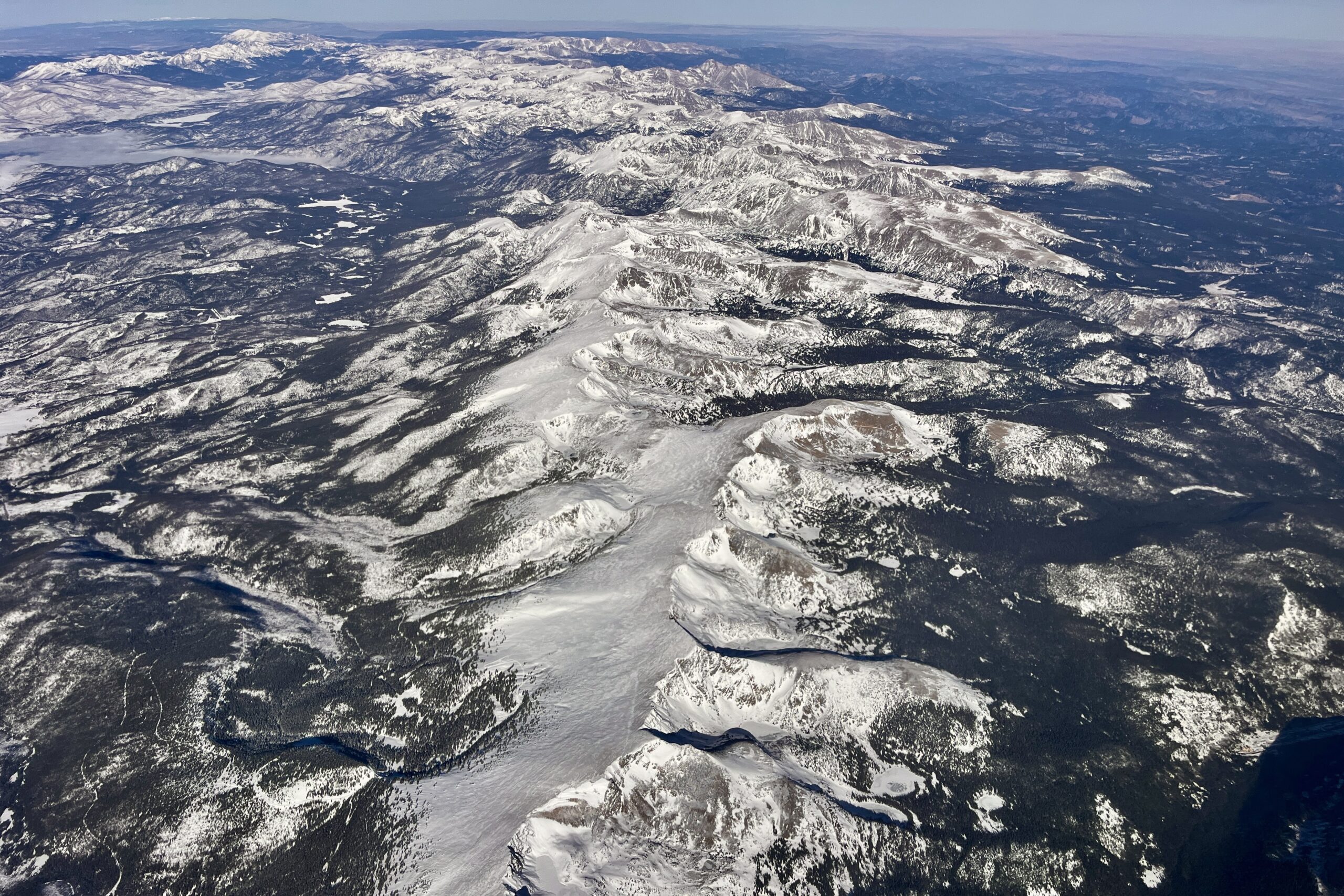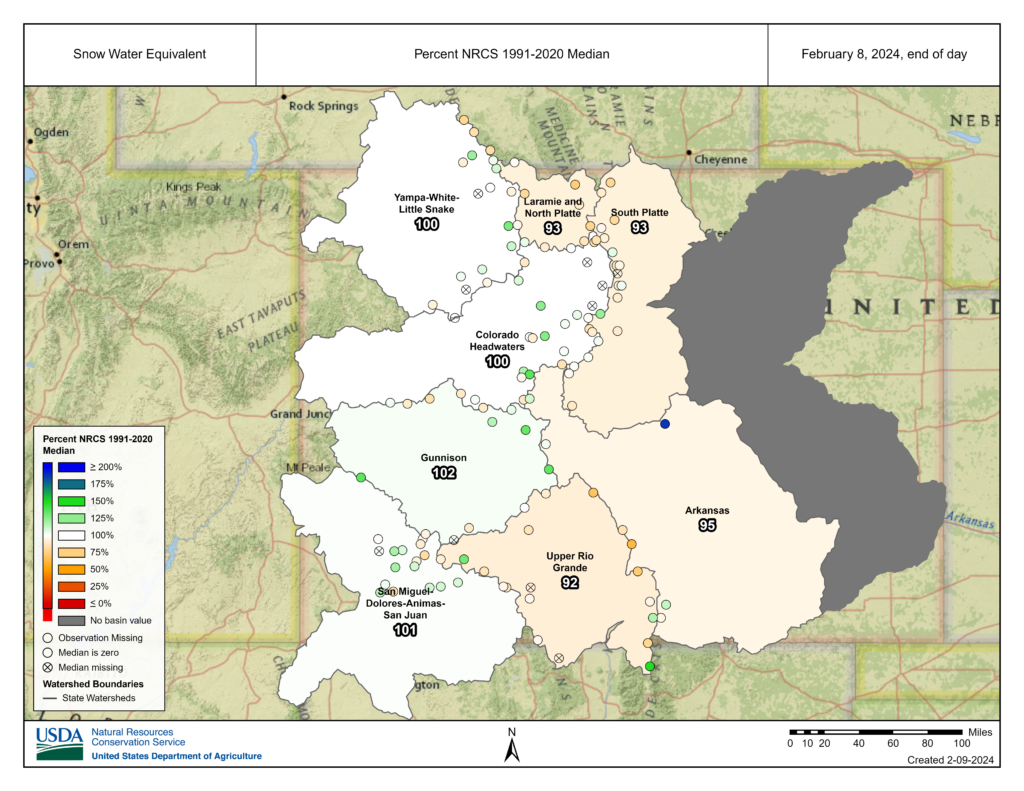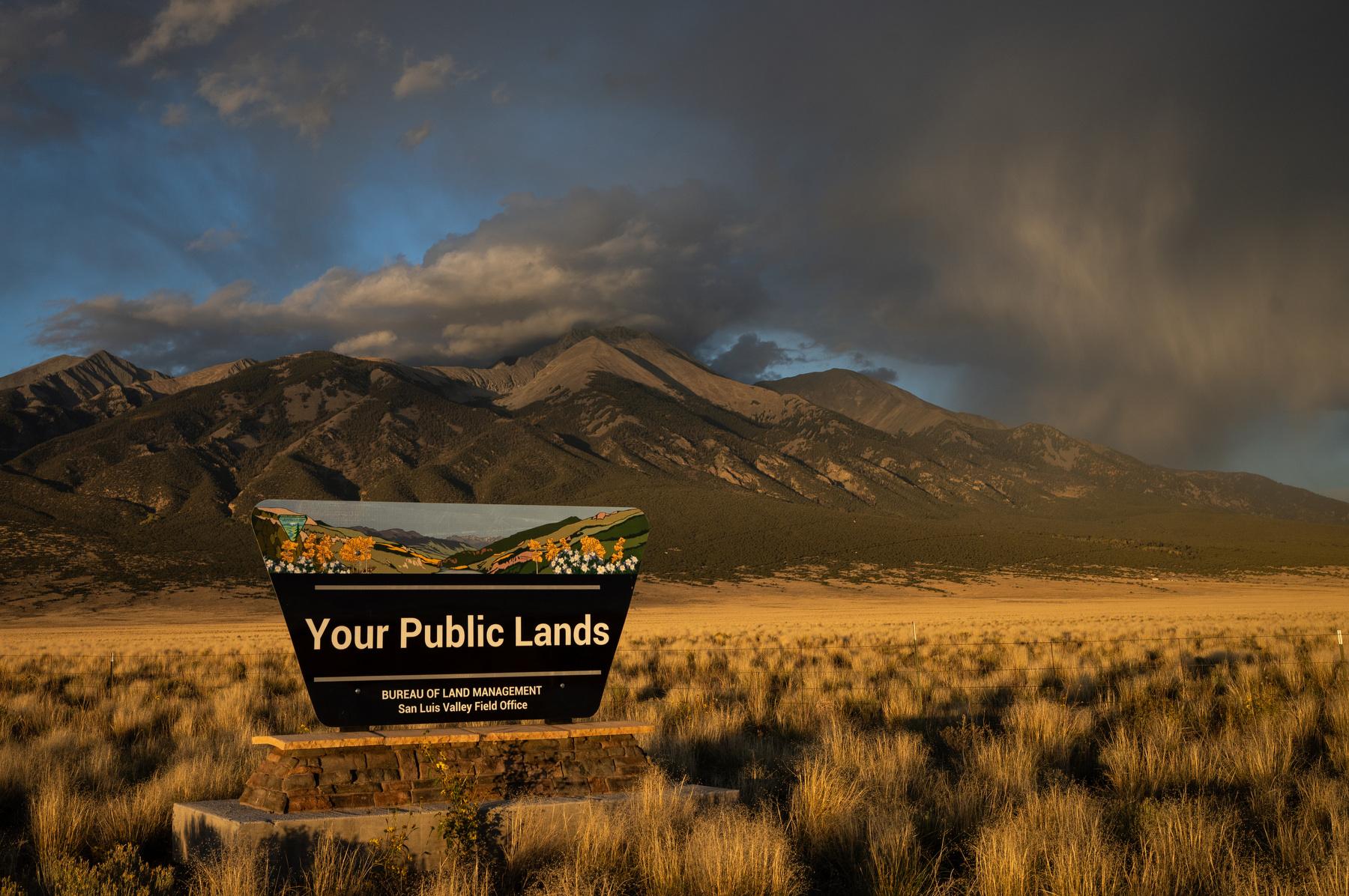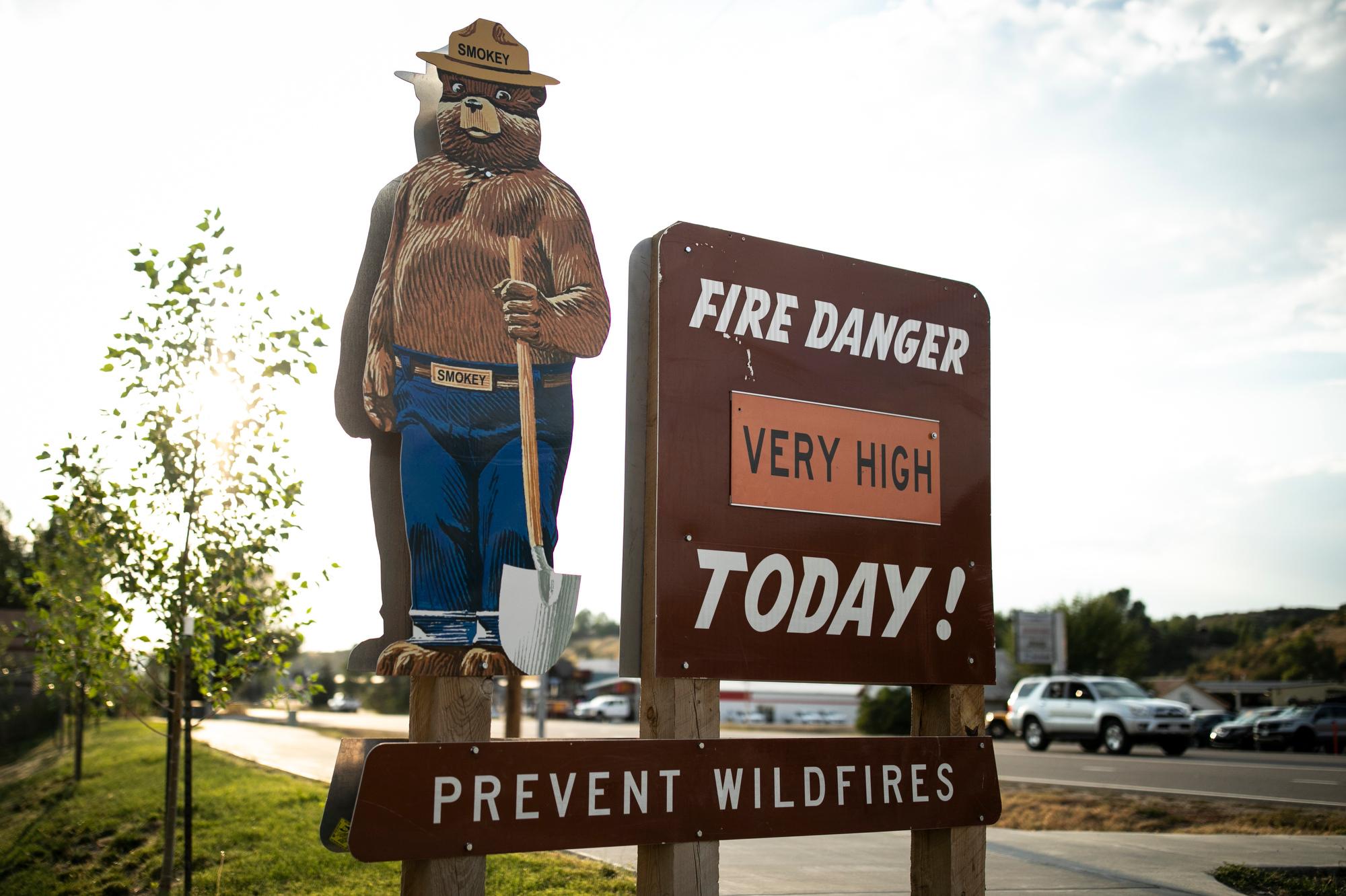
Colorado's winter got off to a slow start, but snowpack levels have finally started to rebound to normal levels across the state.
Statewide, snow accumulation across Colorado is about 98 percent of normal levels, data from the federal government’s SNOTEL network retrieved on Feb. 9 show.
Zooming in, sensors in each of the state’s major river basins report snow accumulations that are close to the long-term average, which is based on snowpack levels recorded from 1991 to 2020.

This is a major improvement from just weeks ago and welcome news for water planners: Colorado snowpack is a vital water storage system, a reservoir that melts into liquid in the spring and supplies water used across the state. That mountain runoff also supplies most of the water that flows into the Colorado River to 40 million people across the West.
Steven Fassnacht, a professor of snow hydrology at Colorado State University, said major storms in January helped make up for lost ground quickly, but warned that it’s too early to know if the gains will continue.
“This rebound is good, but we are still only at early February,” he said. “We need to see what happens for the rest of this month and March.”
Snow accumulation usually reaches its peak level in early April, which is when researchers have a more accurate estimate of how much water the mountains have banked to fill Colorado’s reservoirs and rivers.
Even if Colorado ends with an exceptionally snowy winter, it won’t fix long-term water shortages in key Colorado River reservoirs in Arizona, Nevada, and Utah, Fassnacht said. That river system has suffered under a climate-fueled megadrought that would need multiple “big snow years” in Colorado to fix.
However, Fassnacht said there is one big reason to be optimistic about more snow and a strong water supply, especially in southern Colorado: a strong El Niño. The warm Pacific Ocean weather cycle usually brings big snows and lots of runoff, which he said could help fill those reservoirs.
- The Antarctic Ocean plays a critical role in regulating the world’s climate. Warming temps are throwing it off balance
- Progress made in large mitigation project in hopes of protecting Colorado Springs water source
- Private water wells in Pueblo County may be eligible for free PFAS testing
- Lawmakers will start 2024 with a new drought playbook. Is it bold enough for a hotter, drier Colorado River?
- Why Colorado should expect a drier future with more wildfires and air pollution









